By Dan Meadors & Dylan Frost, The Wholesale Formula
When most people think about selling on Amazon, their minds go straight to the hardest, most intimidating scenarios: inventing a product from scratch, competing against giant companies with endless budgets, or trying to run complex ad campaigns that cost thousands of dollars a month.
But here’s the truth we’ve learned over the last ten years—after managing over $40 million in Amazon sales and working with thousands of sellers:
The best opportunities are often the simplest ones.
And one of the simplest, most overlooked strategies for new sellers is something we call the Hidden Goldmine Strategy.
This strategy is about finding products that are already selling, but are being held back by something easy to fix: bad listings.
Why Bad Listings = Big Opportunities
Think about your own online shopping experience. You’re browsing Amazon and land on a product page. It has just one blurry image. The title is vague and doesn’t really describe what the product is. The bullet points are short, generic, or missing altogether. Maybe there’s no description at all.
Would you feel confident buying that product? Probably not.
Now here’s the crazy part: thousands of products with listings like this are still selling every day. Customers push through the weak listings because they already want the product, or they’re the only option available. That means the product itself is solid—it’s just the presentation that’s broken.
That’s where you come in.
If you can identify these under-optimized listings, you can create partnerships with the brands behind them. You bring value by helping them fix what’s broken—and in exchange, you open the door to becoming one of their wholesale partners.
What Does a “Bad Listing” Look Like?
A bad listing is usually easy to spot once you know what to look for. Here are some of the most common red flags we train our students to notice:
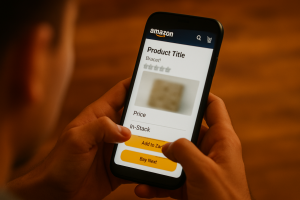 Only one product image (especially if it looks low-quality or outdated).
Only one product image (especially if it looks low-quality or outdated).- Short or missing bullet points that don’t actually describe features or benefits.
- A title that’s too short, vague, or missing common search terms customers would use.
- A missing or copied description that adds no value or credibility.
Here’s an important note: these “bad” listings aren’t necessarily mistakes. Sometimes the brand just didn’t know better when they uploaded their product years ago. Sometimes they didn’t think it mattered. Sometimes they didn’t realize how much money they were leaving on the table.
Your job isn’t to criticize—it’s to recognize the opportunity and step in with solutions.
What Makes a Listing “Fixable”?
Not every bad listing is worth chasing. You need to be selective so you don’t waste time. We use two simple filters to know whether a product is worth pursuing:
- The product has demand. Even with a bad listing, it’s selling. You can check this by looking at its Best Seller Rank (BSR). The lower the BSR, the more sales it’s generating. You don’t need exact numbers at first—just confirmation that customers are buying.
- Amazon Retail isn’t a seller. This is critical. If Amazon itself (not third-party sellers, but the actual Amazon company) is listed as a seller, it’s almost impossible to compete. They’ll dominate the listing. But if only third-party sellers are present, you have a real shot.
That’s it. If the product has demand and no Amazon Retail competition, it’s fixable.
Why Brands Struggle with Listings
To understand why this strategy works so well, you need to step into the shoes of a brand owner.
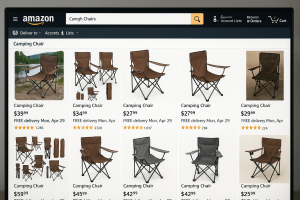 Many of the companies behind these products are experts at what they do: designing and producing great items. But they’re not experts at e-commerce. They may not understand Amazon’s rules, algorithms, or customer psychology.
Many of the companies behind these products are experts at what they do: designing and producing great items. But they’re not experts at e-commerce. They may not understand Amazon’s rules, algorithms, or customer psychology.
For them, creating a listing was just another task on the to-do list—something they rushed through years ago and never thought about again.
Now imagine you come along. You notice their listing has one blurry photo, no description, and a weak title. You know that with better photos, expanded bullet points, and optimized keywords, sales could increase dramatically.
When you reach out and offer to help, you instantly stand out from every other seller who just asks for permission to resell their product. Instead of being a taker, you’re a giver—you’re adding value.
How to Approach a Brand (Without Feeling Pushy)
A lot of new sellers get nervous about contacting brands. They think:
“Why would anyone listen to me? I’m new.”
But here’s the reality: brands don’t care how long you’ve been selling. They care about whether you can help them.
Here’s a simple approach that works:
 Compliment the product. Let them know you’re a fan.
Compliment the product. Let them know you’re a fan.- Point out the problem. Mention the listing has only one image or a short description.
- Offer the solution. Explain you can help optimize it for better sales.
- Ask to work together. Position yourself as a partner, not just another seller.
It could sound like this:
“Hi, I came across your product on Amazon and I think it’s fantastic. I did notice the listing only has one photo and a very short description, which I believe is costing you sales. I’d love to help optimize the listing so more customers can see how great your product really is. Would you be open to a conversation?”
It’s that simple. No pressure. No begging. Just offering real value.
Step-by-Step: The Hidden Goldmine Strategy
Let’s break this into a clear, repeatable process:
 Search for products. Pick a category you’re interested in and browse Amazon. Don’t rush—this is about looking for opportunities.
Search for products. Pick a category you’re interested in and browse Amazon. Don’t rush—this is about looking for opportunities.- Spot the red flags. Weak images, missing bullets, short titles, no descriptions.
- Check the demand. Use BSR as your guide. If it’s selling even a little, that’s proof of demand.
- Confirm no Amazon Retail. If Amazon isn’t on the listing, you’re good to go.
- Reach out to the brand. Be respectful, positive, and solution-oriented.
- Build the relationship. Once you help them, they’ll often reward you with wholesale opportunities.
Why This Strategy Works for Beginners
If you’re just starting out, this strategy gives you a massive advantage.
 You don’t need a big advertising budget.
You don’t need a big advertising budget.- You don’t need to invent or design a product.
- You don’t need years of experience.
What you need is the ability to see what others miss: the opportunities hidden inside poor listings.
This shifts the game. Instead of competing head-to-head with thousands of sellers on popular, saturated products, you’re creating your own opportunities by helping brands improve.
It’s not about outspending—it’s about outsmarting.
Common Fears (And Why They’re Wrong)
Let’s address the biggest fears new sellers have about this strategy:
“I’m too new, no one will listen to me.”
Wrong. Brands listen when you provide value. Your experience matters less than your ability to solve their problem.
“What if I get rejected?”
Rejection isn’t failure. Not every brand will say yes, and that’s okay. The more you practice, the more wins you’ll collect.
“I don’t know how to optimize listings yet.”
You don’t need to be a world-class copywriter or photographer. Start with the basics: better photos, fuller descriptions, and clear titles. These simple fixes make a huge difference.
Building Long-Term Relationships
Here’s where the real magic happens.
When you help a brand fix their listing, you’re not just opening the door for one product—you’re opening the door to their entire catalog.
Maybe they have ten other products with weak listings. Maybe they’re launching new items and want your help from the start.
Before long, you’re not just another seller—you’re a trusted partner. And trusted partners get access to opportunities that outsiders never see.
This is how small beginnings grow into massive businesses.
Final Thoughts
The Hidden Goldmine Strategy is one of the most powerful tools in your arsenal as a new seller. It’s simple, repeatable, and proven.
- Poor listings with demand = opportunity.
- Fixable = demand exists + no Amazon Retail.
- Value-first outreach = brand partnerships.
That’s it. Nothing complicated. Just a method that works when you put it into action.
We’ve built an entire system around strategies like this—ones that helped us build an 8-figure business from scratch. And we’re sharing everything in our next free live workshop.
👉 Click here to join the waitlist now
Spots go fast, and this is your chance to learn exactly how to uncover opportunities most sellers completely miss.
✅ Quick Recap
- Bad listings are opportunities hiding in plain sight.
- The keys: demand + no Amazon Retail.
- Brands want help, not just more sellers.
- One partnership can snowball into a full business.
👉 Join the waitlist here and get ready to uncover your first Hidden Goldmine.

 In fact, we’d argue affiliate marketing and Amazon FBA are perfect complements. Both allow you to build businesses without having to invent a product from scratch, deal with patents, or carry huge startup risks. Both reward consistency and smart systems. And in 2025, affiliate marketing is thriving — but only for those who adapt to the new rules of the game.
In fact, we’d argue affiliate marketing and Amazon FBA are perfect complements. Both allow you to build businesses without having to invent a product from scratch, deal with patents, or carry huge startup risks. Both reward consistency and smart systems. And in 2025, affiliate marketing is thriving — but only for those who adapt to the new rules of the game. 1. High-Quality AI-Assisted Content
1. High-Quality AI-Assisted Content AI makes it simple to:
AI makes it simple to: Affiliate marketers no longer have to start from scratch for each platform.
Affiliate marketers no longer have to start from scratch for each platform. Thin AI-Spun Blogs
Thin AI-Spun Blogs
 We know exactly how that feels because we’ve been there. Over the last decade, we’ve helped thousands of sellers take their very first steps into wholesale. And while the results vary, the system that we teach has helped beginners start with as little as a few hundred dollars and grow into full-time businesses.
We know exactly how that feels because we’ve been there. Over the last decade, we’ve helped thousands of sellers take their very first steps into wholesale. And while the results vary, the system that we teach has helped beginners start with as little as a few hundred dollars and grow into full-time businesses. When it sells, you now have
When it sells, you now have  How to Restock Smart
How to Restock Smart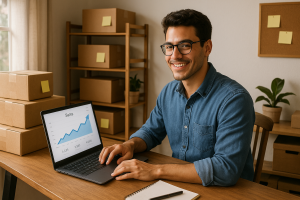 The solution is to reframe risk.
The solution is to reframe risk. “What if I run out of money before I can reorder?”
“What if I run out of money before I can reorder?” Think of your Amazon seller account like your body. You can eat well, exercise, and get regular checkups—or you can ignore it until something serious happens. By the time you “feel” a problem, it’s often much harder (and more expensive) to fix. We value preventive over reactive action-taking.
Think of your Amazon seller account like your body. You can eat well, exercise, and get regular checkups—or you can ignore it until something serious happens. By the time you “feel” a problem, it’s often much harder (and more expensive) to fix. We value preventive over reactive action-taking.  1. IP Complaints (Intellectual Property)
1. IP Complaints (Intellectual Property) The IPI score ranges from
The IPI score ranges from  Selling products from unreliable sources
Selling products from unreliable sources Why Staying Healthy Pays Off
Why Staying Healthy Pays Off If you’re just starting out (or thinking about starting), you might feel overwhelmed by product research, supplier outreach, competition, pricing, and logistics. We get it. That’s why we put together this post: to show you how AI tools are making those hurdles easier to clear.
If you’re just starting out (or thinking about starting), you might feel overwhelmed by product research, supplier outreach, competition, pricing, and logistics. We get it. That’s why we put together this post: to show you how AI tools are making those hurdles easier to clear.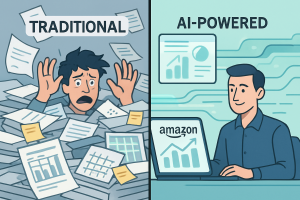 Before we get into our go-to tools, it’s important to understand why AI is such a big deal in the Amazon wholesale space.
Before we get into our go-to tools, it’s important to understand why AI is such a big deal in the Amazon wholesale space.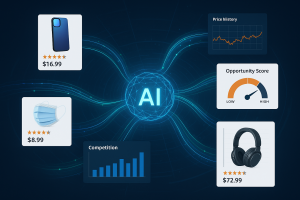 What It Does:
What It Does: What It Does:
What It Does: It starts with understanding
It starts with understanding  Look at the listing and check who’s selling the product. If there are
Look at the listing and check who’s selling the product. If there are 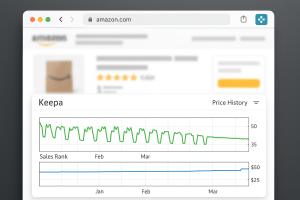 Here’s what to look for
Here’s what to look for Red Flags to Watch Out For
Red Flags to Watch Out For Amazon Retail is in the Buy Box
Amazon Retail is in the Buy Box